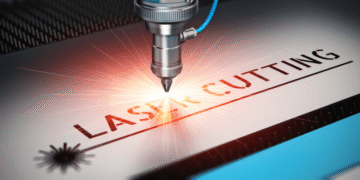In the ever-evolving world of design and manufacturing, the adoption of advanced imaging technology has ushered in a new era of precision and efficiency. 3D scanning services are at the forefront of this revolution, transforming numerous industries and redefining traditional processes. This article explores the impact of these services on the design landscape and how they are pushing the boundaries of creativity and construction.
The Emergence of 3D Scanning
3D scanning technology has rapidly progressed from a novel concept to a vital tool in an impressively short space of time. Equipped with the ability to capture the physical dimensions and features of an object with exacting detail, it propels professionals into a world where digital replication is not just possible but exceptionally accurate. Industries ranging from aerospace to archaeology are now embracing these innovative services.
Unmatched Precision in Design
The primary advantage of using 3D scanning services lies in their unparalleled precision. With high-resolution data capture, designers and engineers can analyse complex geometries and surface details that were once difficult to measure manually. This not only streamlines the design process but also enhances the quality of the final product.
Accelerating Product Development
Time is of the essence in the competitive realm of product development, and traditional methods of prototyping can be time-consuming and expensive. 3D scanning accelerates this phase by allowing for rapid digital prototyping, creating exact 3D models that can be tested and modified without the need for physical samples. Such agility in design iteration is invaluable for staying ahead of the competition.
Integration with Other Technologies
Another aspect that underscores the importance of 3D scanning services is their synergy with other cutting-edge technologies. When combined with 3D printing and CAD software, 3D scans can be used to create a seamless workflow from initial concept to final production, bypassing traditional bottlenecks and enhancing collaborative efforts.
Cultural Heritage and Restoration
In the realms of art and cultural heritage, 3D scanning offers unique opportunities for preservation and restoration. By capturing the precise dimensions of historical artefacts, restorers can accurately reproduce damaged sections, or even create replicas for study and display, ensuring that the tactile aspect of our shared cultural legacy endures.
Customisation and Personalisation
The precision offered by 3D scanning services extends into the burgeoning field of customisation. From tailoring medical devices to fit a patient’s unique anatomy to creating bespoke components for automotive enthusiasts, the potential for personalisation is vast. The ability to scan and alter objects digitally opens up a world of custom-fit products and services.
Streamlining Repairs and Maintenance
Within the industrial sector, maintenance and repair are critical functions. Here, 3D scanning is transforming processes by allowing technicians to scan worn or broken parts and generate accurate 3D models for replacement or refurbishment, reducing downtime and operational costs.
Improving Quality Control
The meticulous detail captured by 3D scans also enhances quality control procedures. By comparing manufactured components against original 3D models, discrepancies and defects can be readily identified and corrected, maintaining the integrity of the manufacturing process.
Enabling Architectural Advances
In the world of architecture and construction, the impact of 3D scanning services is profound. Scans provide architects with exact replicas of terrain and built environments, aiding in retrofitting, refurbishment, and the planning of new constructions, ensuring that modern extensions blend seamlessly with existing structures.
Enhancing Interactive Experiences
The entertainment and gaming industries benefit from 3D scanning services through the creation of immersive and interactive experiences. Real-world objects and environments can be digitised and integrated into virtual worlds, heightening realism and engagement for users.
Navigating Challenges in Adoption
Despite the clear advantages, some challenges hinder the widespread adoption of 3D scanning. Initial costs and the need for specialised expertise can be barriers for smaller operations. However, as the technology becomes more accessible and training more widely available, these hurdles are gradually being overcome.
Sustainable Manufacturing
Finally, 3D scanning contributes to the sustainable manufacturing movement. By improving the precision of designs and reducing waste in the prototyping phase, businesses can minimise their environmental impact, creating a greener future for production and design.
Conclusion
The array of benefits afforded by 3D scanning services positions them as a transformative force in design and manufacturing. As the technology continues to evolve and integrate with other digital innovations, its role in shaping the future of numerous industries is assured. From enhancing the accuracy of medical implants to preserving ancient relics, 3D scanning is not merely an emerging trend; it is a mainstay of modern design philosophy and a boon for future generations of creators and innovators.
The Road Ahead
As we gaze into the horizon of possibilities presented by 3D scanning, one can only marvel at how these services will continue to revolutionise our approach to design, construction, and production. The future is being shaped today, one precise scan at a time, ensuring that innovation and progress march forward in lockstep.













